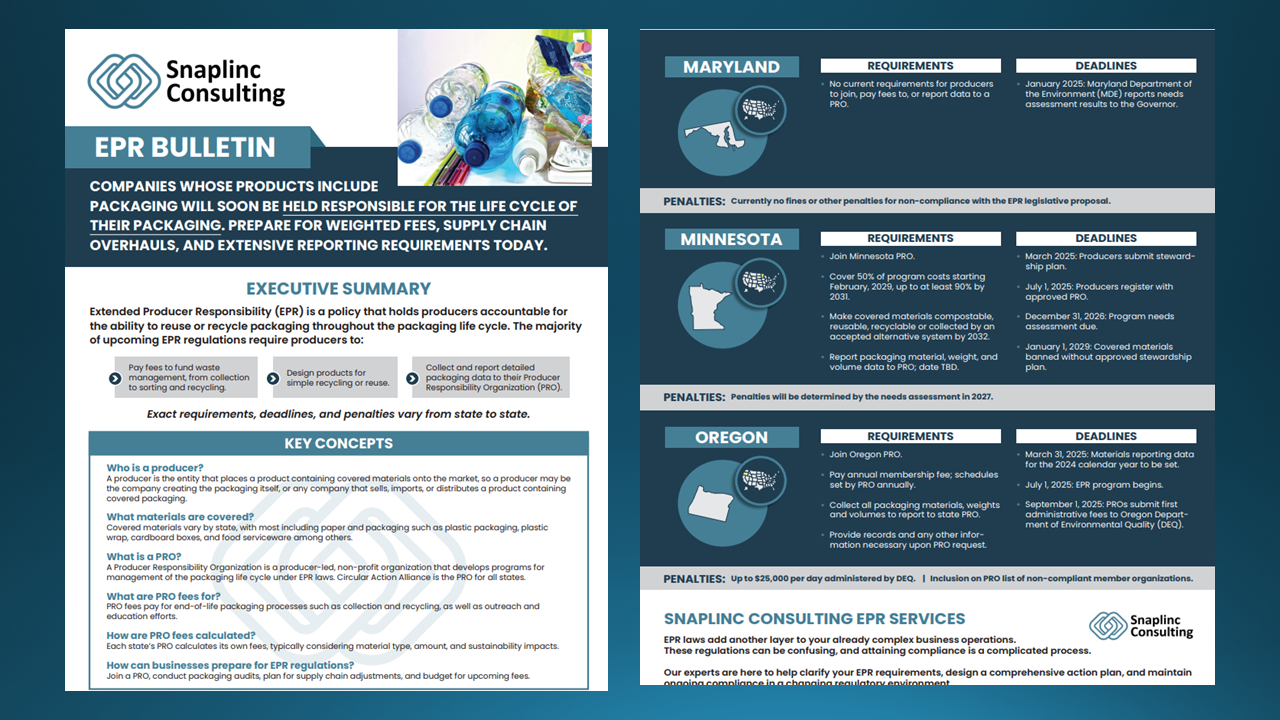The EU's Corporate Sustainability Reporting Directive
The first CSRD deadlines start in 2025; brands need to prepare now for data collection and reporting requirements.
Background
The Corporate Sustainability Reporting Directive (CSRD) is a legislative directive put forth by the European Commission aimed at enhancing corporate transparency and accountability regarding sustainability. Building upon the existing Non-Financial Reporting Directive (NFRD), the CSRD seeks to align sustainability reporting standards across the European Union and strengthen the disclosure requirements for companies operating within its jurisdiction.
Who Does CSRD Affect?
The CSRD affects a much wider range of entities than previous directives: many small and medium enterprises, all large companies, all companies on listed markets, and international companies with subsidiaries operating within the EU.
CSRD impacts all large public and private companies that meet at least two of the following criteria:
250+ employees
€20 million or more in total assets
€40 million or more in gross revenue
CSRD Regulations
Key provisions of the CSRD include:
Detailed Reporting: The directive mandates more detailed and standardized ESG reporting.
Digital Reporting: Reported information must be digitally tagged using the European Single Electronic Format (ESEF) to ensure accessibility and comparability.
External Assurance: Companies will be required to obtain external assurance for their sustainability reports to enhance credibility and trust in the disclosed information.
CSRD Deadlines
Compliance deadlines will be rolled out in phases starting in 2024.
FY 2024 (Reporting in 2025)
Organizations already mandated to comply with the NFRD. This includes all organizations listed in an EU-regulated market with 500 or more employees.
FY 2025 (Reporting in 2026)
Large undertakings not already mandated to comply with the NFRD. This includes EU-based listed or non-listed companies that meet two of the following three criteria on any two consecutive balance sheet dates:
EUR 25 million or more in total assets
EUR 50 million or more in net gross revenue
250+ employees (average) during the year
FY 2026 (Reporting in 2027)
Small and medium-sized entities listed on an EU-regulated market
FY 2028 (reporting 2029)
Non-EU parent companies that meet certain requirements
Penalties for Noncompliance
Individual EU member states determine their own CSRD non-compliance penalties based on relevant state laws. These could include fines, reputational damage, and legal consequences.
Snaplinc’s Expert Recommendations
To ensure compliance with the CSRD and leverage sustainability reporting as a strategic opportunity, companies should consider the following action items. Snaplinc Consulting creates recommended timelines for each action item for our clients:
Assess Applicability: Determine whether your organization falls within the scope of the CSRD and identify any additional reporting obligations compared to the NFRD.
Gap Analysis: Conduct a comprehensive gap analysis to evaluate current sustainability reporting practices against the requirements of the CSRD. Identify areas of improvement and necessary adjustments to align with the directive's provisions.
Enhance Data Collection and Management: Strengthen internal processes for collecting, managing, and validating sustainability data to ensure accuracy, completeness, and reliability. Implement robust data management systems and controls to support transparent reporting.
Digitalization Readiness: Assess the organization's readiness for digital reporting and compliance with ESEF requirements. Invest in necessary technology infrastructure and capabilities to facilitate digital reporting and tagging of sustainability information.
External Assurance Engagement: Evaluate options for engaging external assurance providers to verify and validate sustainability reports.
Stakeholder Engagement and Communication: Proactively engage with stakeholders to understand their expectations and priorities regarding sustainability disclosure. Develop clear and transparent communication strategies to disseminate sustainability information effectively and foster trust among stakeholders.
Continuous Improvement: Establish mechanisms for ongoing monitoring, review, and improvement of sustainability reporting practices. Stay abreast of emerging regulatory developments and best practices in sustainability reporting to adapt and enhance reporting processes accordingly.
By proactively addressing these recommendations and adhering to the prescribed deadlines, companies can navigate the transition to the CSRD seamlessly and leverage sustainability reporting as a tool for driving long-term value creation, stakeholder engagement, reputational success.
How Snaplinc Can Help
In navigating the complexities of the CSRD, Snaplinc is a trusted partner. We specialize in providing tailored solutions to help organizations understand, navigate, and comply with evolving sustainability regulations such as the CSRD.
We can take some heavy lifting off your hands:
Conducting comprehensive assessments
Implementing robust reporting frameworks
Enhancing data management processes
Engaging with stakeholders effectively
Strategic planning to align sustainability practices with business objectives
Snaplinc streamlines each company’s individual journey towards CSRD compliance, enhances sustainability performance, and unlocks value for both their business and stakeholders.
Conclusion
The introduction of the CSRD marks a significant milestone in advancing corporate sustainability reporting standards within the EU. By expanding the scope, enhancing reporting requirements, and embracing digitalization, the directive aims to foster greater transparency, accountability, and trust in corporate sustainability performance. Companies must take proactive measures to comply with the CSRD, leveraging it as an opportunity to enhance sustainability practices, mitigate risks, and create long-term value for stakeholders.



